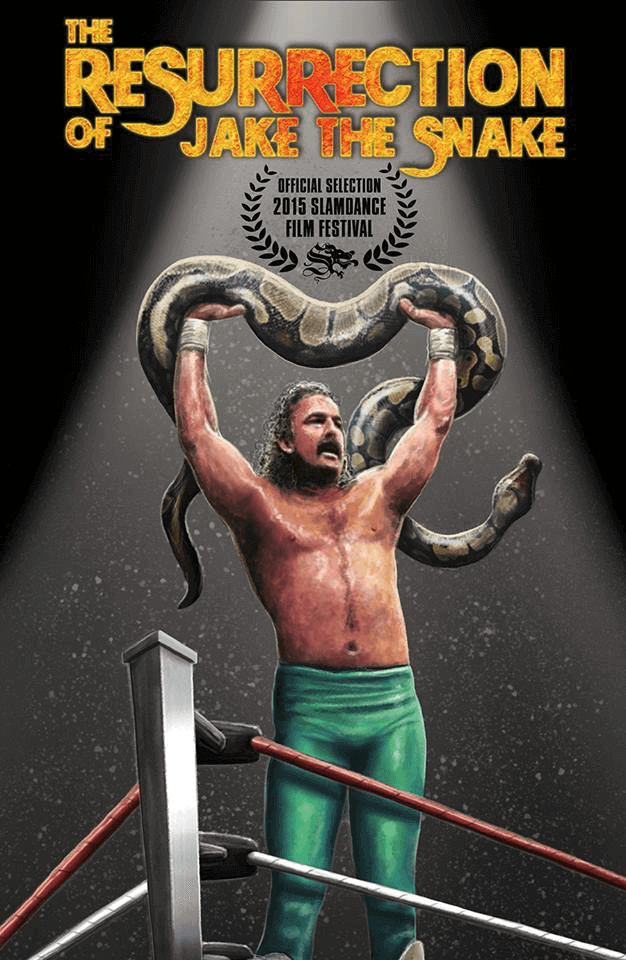

By: Lakeview Health
Jake “The Snake” Roberts was one of the major stars of professional wrestling in the 1980s and 1990s. His ring name refers to his habit of bringing live snakes to the arena, the most famous one being a python named Damien. Like many of his wrestling colleagues, Jake Roberts was hiding a serious substance use disorder. His descent from Wrestlemania glory to severe alcoholism and his subsequent recovery became the focus of a moving documentary in 2015. The film Forbes Magazine called “worthy of Oscar consideration” is now streaming on Netflix. Directed by Steve Yu, The Resurrection of Jake the Snake is an intense 90-minute illustration of the insidious power of addiction and the struggle to overcome it. In 2012, Roberts reached out to his friend and wrestling protégé “Diamond” Dallas Page in Atlanta, Georgia, because he had suffered enough and wanted to be free of his addiction. Page took him in and submitted Roberts to an intensive treatment program based on Page’s unique DDP Yoga system. The film reveals a Jake Roberts who was mentally and physically broken. But Dallas Page firmly believed “exercise and good nutrition could turn him around.” Years of drug and alcohol abuse–not to mention the grueling WWF schedule–have taken a heavy toll. Tough love reigns in Page’s “accountability crib.” It’s a regime of total abstinence, physical exercise, healthy food, weight loss, and emotional support. Roberts weighed over 300 pounds at that point and had trouble getting up from the floor after yoga postures. His hip required surgery and his left shoulder gave him trouble. And he had cravings–powerful cravings–to use alcohol. Exercise physiologist Lauren Stobbie supervises the health and fitness program at Lakeview Health. She knows the value of physical exercise in keeping those cravings in check. “The DDP yoga shown in the movie is a type of power yoga well suited for athletes in particular. Lakeview also offers softer styles such as flow yoga and meditation yoga,” explains Stobbie. “Most of the men showing up for our wellness program have never taken a yoga class in their life, and they are usually hesitant to go in,” she told me. “They need some encouragement and many start with strength training. But once they get started, they usually like it.” At the beginning, many of the Lakeview patients have physical deficiencies similar to Jake Roberts’. “Yoga helps to create a balance in the body that reduces pain and prevents further injuries,” says Stobbie. The wellness program at Lakeview is gender-specific and can be modified for individual needs. As in Page’s “accountability crib,” the men at Lakeview work out in teams and support one another. The bonding and camaraderie are as important as the exercises themselves. For Stobbie the film beautifully demonstrates that exercise is another form of therapy “Exercise and healthy nutrition help drive the positive momentum in addiction recovery.” The film also shows how recovery can be a continuous struggle. When Roberts suddenly runs off, Page catches him at the airport in his socks, not wearing shoes. They argue about drinking, about drug tests, and about being mendacious, but Page never quits on his friend and former mentor. After Roberts has calmed down, he explains how addiction “wormed” its way in. “It’s not a choice. You have no willpower,” he says in the film. Many addiction experts emphasize the impact of trauma and Jake Robert’s case in no exception. We learn that Aurelian Smith, Jr. (his birth name) suffered through a tough childhood of neglect, low self-esteem, and abuse. On camera, Roberts remembers how his father Aurelian “Grizzly” Smith, also a pro-wrestler, was “never proud of him” and how young Aurelian decided to become a great wrestler to show up his own father. It was not a healing strategy and the insecurity at the core of his psyche remained. But the “accountability crib” was different; it provided an important support structure and for the first time in years, Roberts had meaningful interactions with some of his eight kids. He worked hard to stay sober and get healthy, but it was tough. Every time Page went away for a few days, Roberts would get into trouble, but every time he fell down, he got back up. Slowly but surely, he began to heal. And then another broken wrestler arrived. Scott Hall performed for the World Wrestling Federation as Razor Ramon. His problems with drugs were made public in the late 1990s. Numerous health problems ensued. When he arrived in Atlanta, he had to sit in a wheelchair. By then, Jake was well enough to help Dallas resurrect another friend. This was the next important step in Jake’s recovery—helping somebody else in his fight against addiction. But the cravings continued to haunt Jake, and he began to realize that battling the disease of addiction would be a rest-of-his-life project. “I know it’s hard to help people when they’re’ stealing from you or lying,” Roberts told CBC in a recent interview. “But it’s the addiction doing that, not the person. We’re not bad people; we just have bad problems.” The film gives people affected by addiction hope that change is possible. It’s not easy to achieve recovery, and there will be setbacks, but with the right treatment and support structure, it can be done. At the end of the movie, Jake is certain that his “history will not be his destiny.” Ultimately, the film is a testament to the power of love. As Dallas puts it, “Never underestimate the power you give someone by believing in them.”





